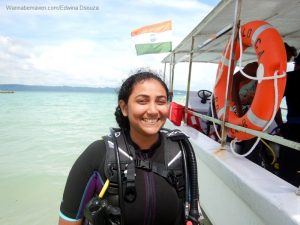 Want to learn Scuba Diving in Andaman Islands? Don’t know which course is right for you?
Want to learn Scuba Diving in Andaman Islands? Don’t know which course is right for you?
This post will answer your queries : )
I backpacked in the Andaman Islands for 11 days. During the first leg of my journey, I learnt scuba diving in Havelock (now Swaraj Dweep Island), and it was an exhilarating experience. Until a year prior, I didn’t know how to swim., but now here I was, certified to dive anywhere in the world.
Many readers have since asked me queries on my Instagram handle around diving in the Andaman Islands. So I’ve finally decided to put pen to paper. I hope this post will help a lot of y’all who are considering learning to dive and especially in the Andaman Islands.
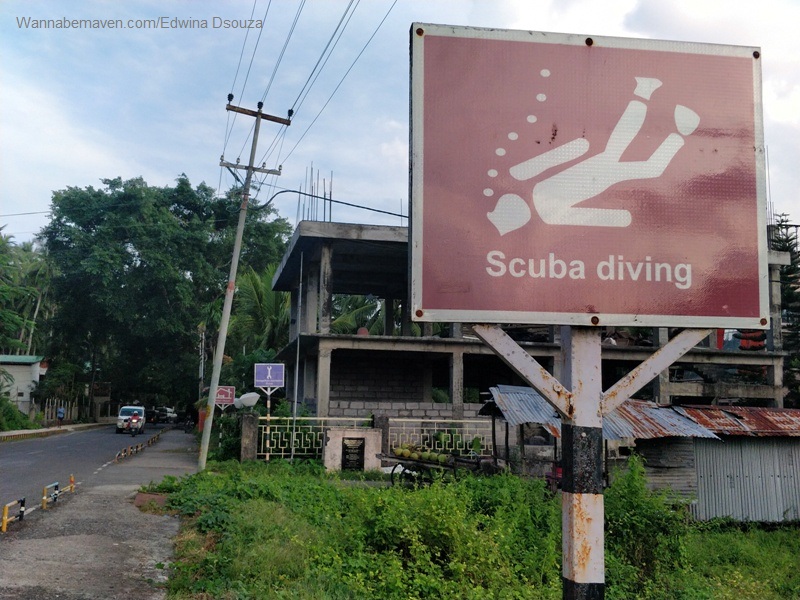
Welcome to Havelock
For convenience, there’s a table of contents, so you can directly jump to the section(s) of your concern. Let’s dive in then, shall we?
Why did I choose diving in the Andaman Islands?
There’s no dearth of information on the internet, but you always want to go with a personal recommendation by someone you trust, which is what I did; and hopefully you’d do after reading this post! My ex-colleague visited the Andamans twice and she also learnt diving there. So I chose this beautiful offshoot island of India based on her suggestion. Needless to say, it was one of my most satisfying experiences to complete my diver certification in the Andaman Islands.
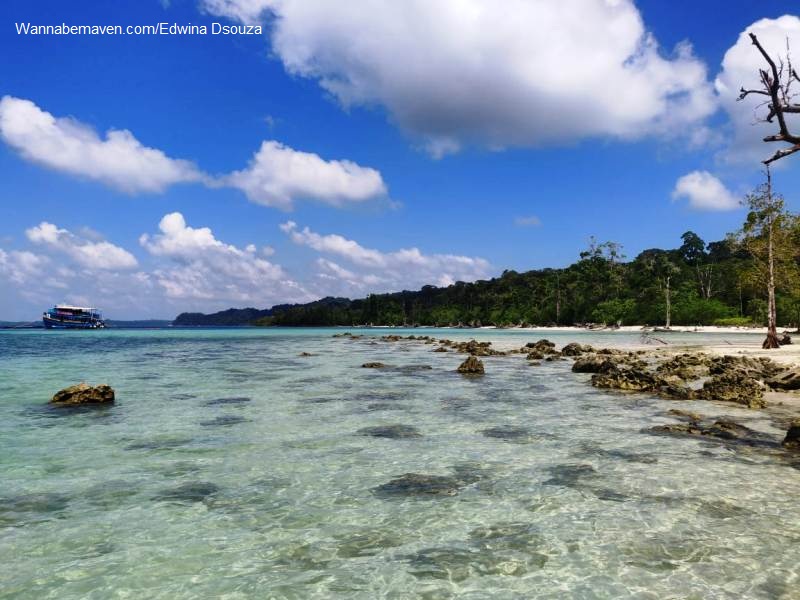
Stunning beaches of Havelock
Which diver course did I choose?
Professional Association of Diving Instructors (PADI) and Scuba Schools International (SSI) are two reputed organisations that certify divers. Both are somewhat similar but I’d say, PADI is the more popular brother, and SSI is slightly cheaper, so choose based on your liking. My diver course was PADI certified. The most popular recreational dive courses are:
- Open Water Diver
- Advanced Open Water Diver
- Enriched Air Nitrox Diver
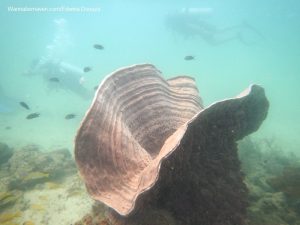 I did an Open Water Diver course which allows me to dive up to 18 meters (60 feet) in the ocean. The next level would be Advanced Open Water Diver, so one can dive up to 30 meters (100 feet) and also go night-diving. The third level is Enriched Air Nitrox that teaches you to use a different blend of air to reduce Nitrogen in your body so you can stay underwater for longer and dive typically up to 36 meters (120 feet).
I did an Open Water Diver course which allows me to dive up to 18 meters (60 feet) in the ocean. The next level would be Advanced Open Water Diver, so one can dive up to 30 meters (100 feet) and also go night-diving. The third level is Enriched Air Nitrox that teaches you to use a different blend of air to reduce Nitrogen in your body so you can stay underwater for longer and dive typically up to 36 meters (120 feet).
Some dive centres also offer a ‘Scuba Diver Course’ which is a level lower than the Open Water Diver programme. This will allow you to dive up to 12 meters (40 feet) with your dive instructor ONLY, which is why I’d suggest to skip this level and go straight for the Open Water Diver Course, even if it costs a little extra.
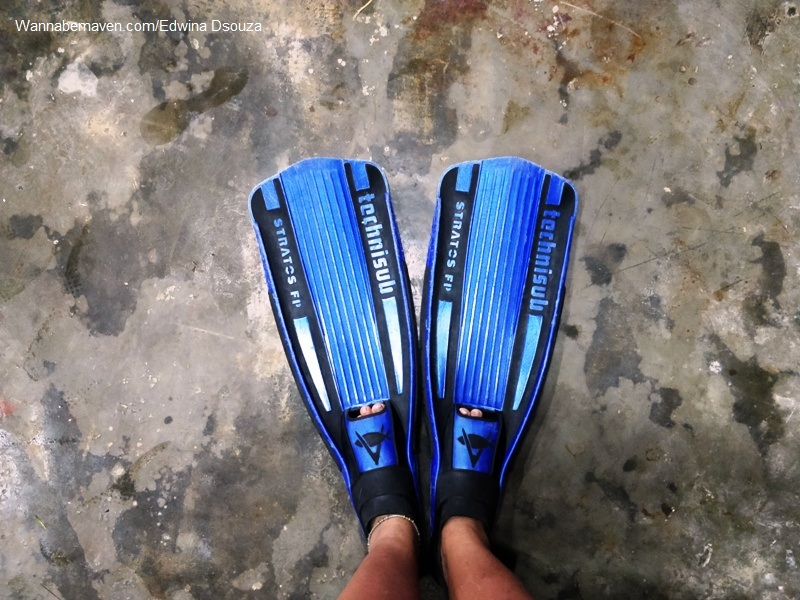
All set for my first dive
How many days is the Diver course?
The Open Water Diver course will take four days to complete. This includes one whole day of theory and three days of skills training and four dives.
You can choose to complete your theory online at home so you have an extra day to explore the Andaman Islands. I’m not a study-from-home person, so I did my theory at my dive centre in Havelock.
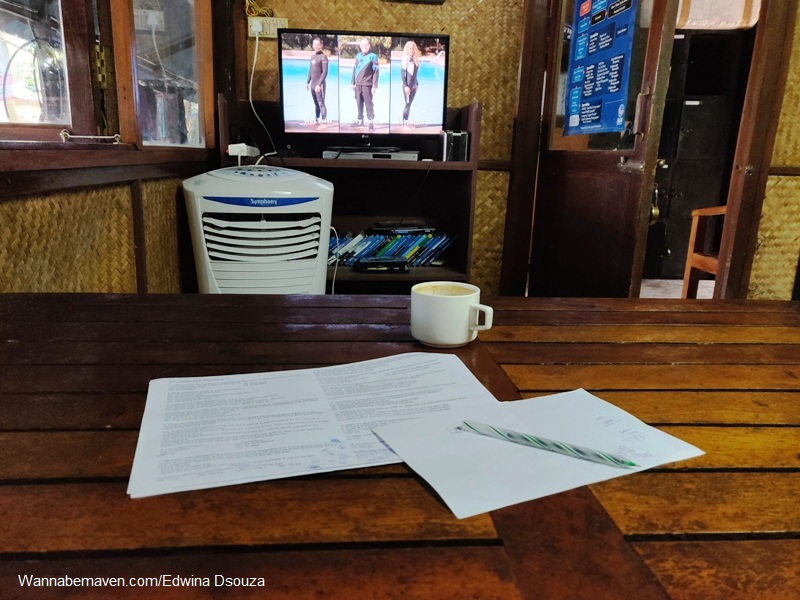
The theory was not that easy :/
Do I need to know swimming?
Not really, however, it is preferred. I did learn basic swimming before signing up for my diver course. Almost all professional dive centres have a pre-requisite to give a swim test and/or float test.
I would definitely add that you need a decent physical stamina for this course. The skills training are rigorous and I used to be exhausted at the end of each day.
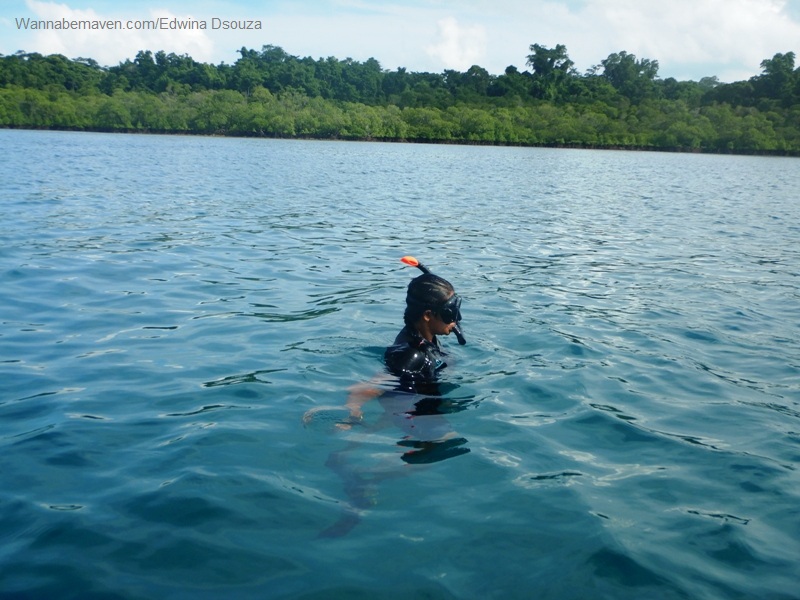
Skills training on Day 3
How was my experience of diving in Andaman?
I’d be lying if I said it was an easy breezy. My first day in the water was excruciating. It rained so the water was choppy and the visibility was poor. I accidentally swallowed sea water through the snorkel while practicing skills and vomited seven times. I even did one emergency exit during my skills training where I had to remove my mask underwater water and put it back. Rule of thumb – Don’t breathe from your nose underwater.
But by my fourth dive I was at home in the sea…like a Dugong or water cow (literally!). The weather was great and the underwater visibility was typically 15-20 meters. We saw stingrays, sea urchins, snappers, parrotfish, gobis, sweet-lips, clownfish, box fish, Moorish idol and hundreds of live colourful corals. We even swam passed a jeep and a scooty that was in ruins underwater. The joy of logging my first dive into the dive-log book was truly memorable – 8.3 meters (27 feet) underwater for 33 minutes straight.
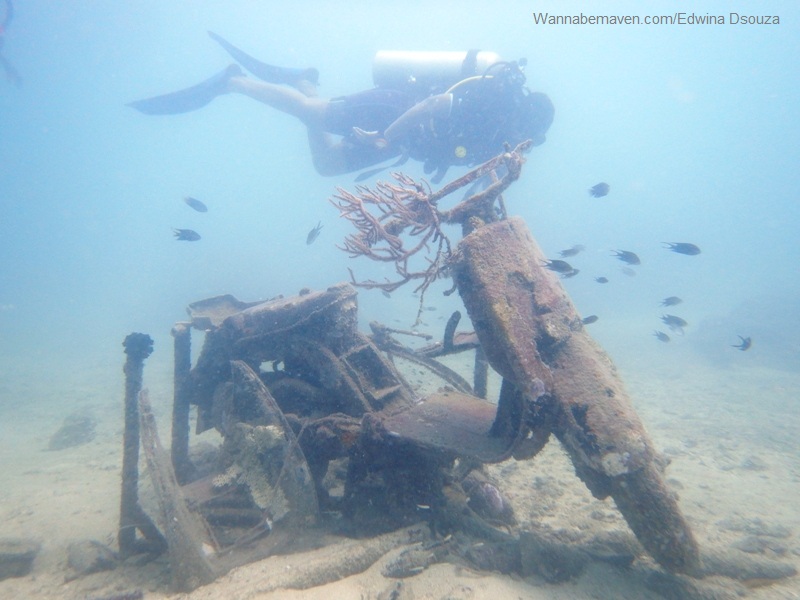
Underwater world
Which dive center did I choose?
There are many dive centres across the Andaman Islands, but it is best to stick to a PADI or SSI recognised dive centre. DIVE India and Barefoot Scuba are two very prominent dive schools in the Andaman Islands. I did my diver course from Barefoot Scuba. The instructors were fun, friendly and very professional.
Cost for the Open Water Diver course
I paid 28000 INR including tax for my Open Water Diver programme. Dive suit, accessories and equipment were provided by my Dive Centre. Lunches were inclusive on Day 2, 3 and 4 at sea.
It’s best to check with your chosen dive centre for updated prices.
Accommodation in Havelock
Since the diving course was already a BIG cost on this trip, I skipped the accommodation option at Barefoot Scuba as they were a little expensive for my budget. Instead, I stayed at a nearby guest house, Pano Eco Resort, (see picture below), which was hardly a two minute walk to my dive centre.
If you have the budget, you can stay at the luxury cottages at Barefoot Scuba; or choose their chicken huts, where for 450 bucks you’ll get a no-frills bamboo hut with a mattress, pillow, table fan and a dust bin. Bathrooms and toilets are shared but very clean.
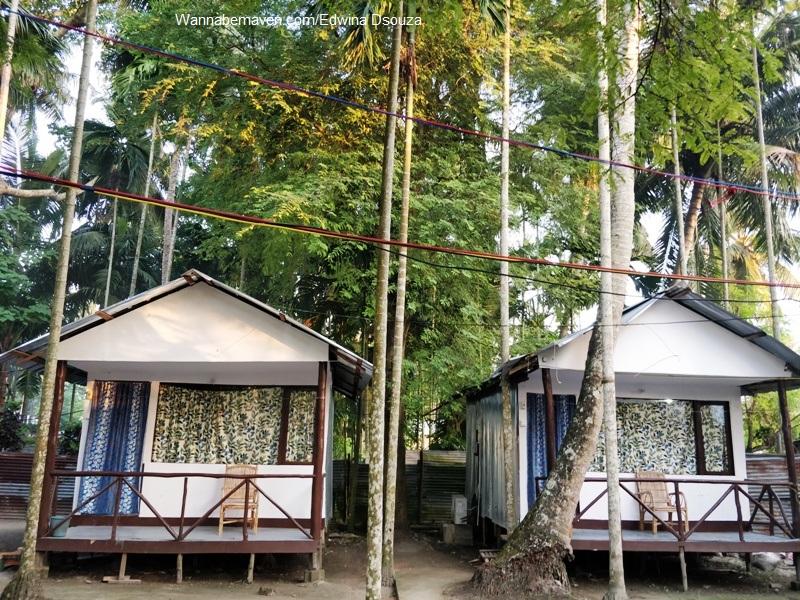
Budget cottages at Pano Eco Resort, Havelock
Best time to dive in the Andaman Islands
The best time to dive in the Andaman Islands is when the underwater visibility is excellent. Hence, monsoons should be avoided as the water will be choppy. November to February is a great time to dive. March and April is shoulder season where tourists will be lesser because of the tropical summers but the waters will still be clear. I dived in the month of November.
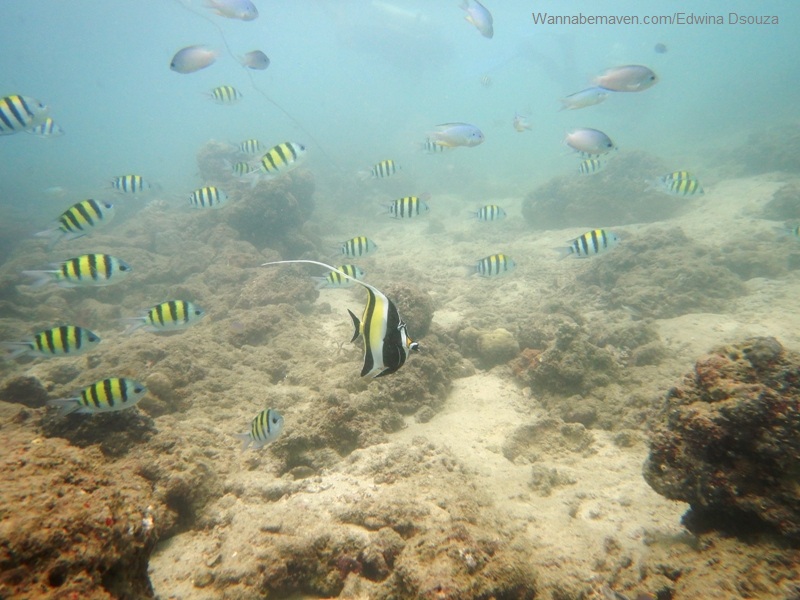
Something’s fishy
Additional days to explore the Andamans
Depending on your itinerary, your travel days will vary. For example, I included Diglipur in the far north of the Andaman Islands which is typically not frequented by tourists. So my trip was for 11 days. If you leave out Diglipur and the middle Andamans (comprising of Rangat and Long Island) then 7-8 days are ideal for your trip including 4 days of diver course.
It’s important to mention that I never got any time to sight-see during the four days of my diver programme. In the mornings, I used to wake up at 6am and go to the dive centre. The whole day went in training and by the time I returned to my resort in the evening, I was completely exhausted. Also note that in the Andaman Islands, it gets dark by 5pm so you can’t really step out for sightseeing.
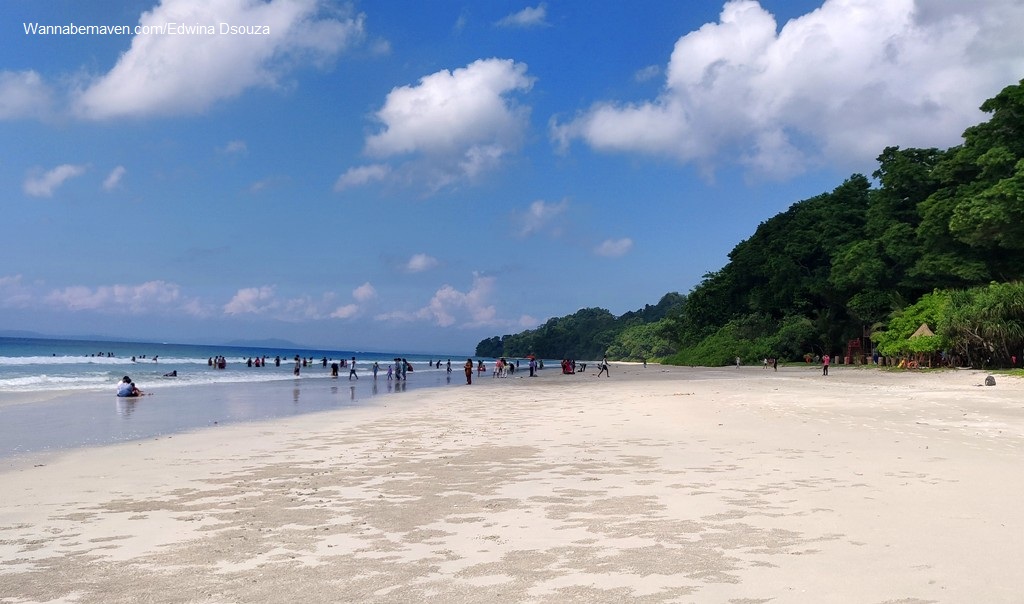
Radhanagar Beach
Some more tips for your diver course
- It is best to dive in clearer waters since the last thing you want is for low visibility to increase your anxiety as a first-timer; which is why the Andaman Islands is one of the best sites in India to dive (also Lakshwadweep)
- Don’t take the theory test lightly, especially if physics is not your cup of tea. I just passed my theory test.
- Once you complete the course, you get a PADI diver card which allows you to dive anywhere in the world. Although the diver card doesn’t expire, it is advised to do a refresher course if you haven’t dived in over a year. DON’T dive without informing your instructor if there is a big gap between your dives.
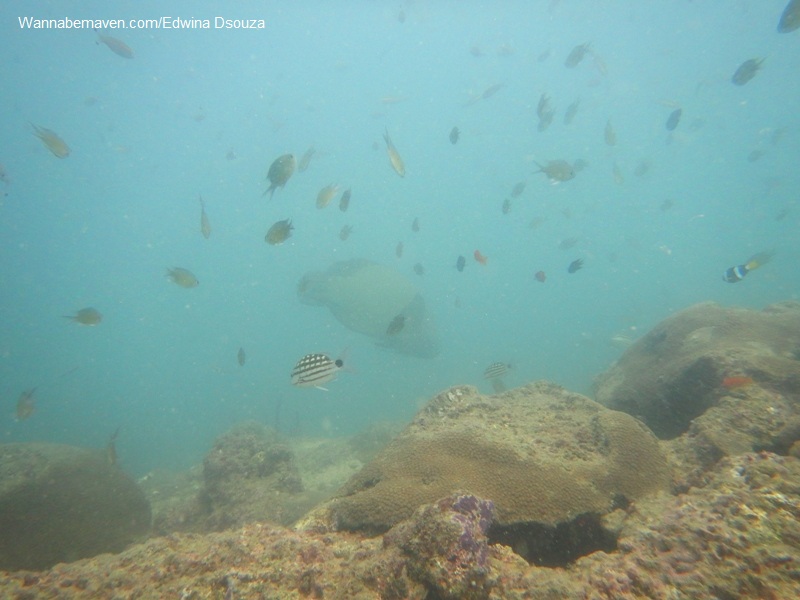
Travel vlog – Diving in Andaman
You can also check out my video on diving in the Andaman Islands. And don’t forget to subscribe to my YouTube channel
==
Find hotels in Havelock (Swaraj Dweep)
==
Join me on Twitter, Facebook and Instagram for more such travel stories and photographs. I also make cool status updates, just in case you like randomness!
Subscribe to this blog to receive instant notifications of my new posts in your inbox.
Superb mam!
Quite useful info👍